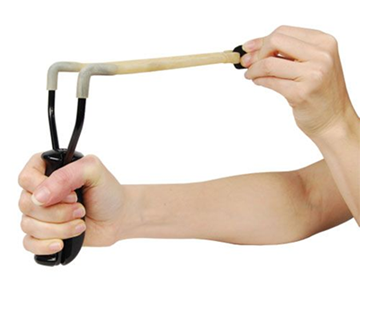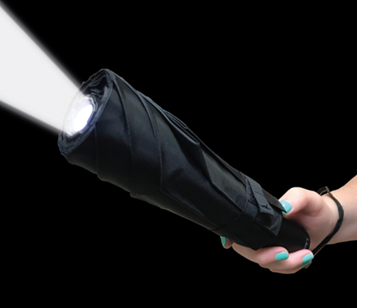The Top 20 Most Dangerous Things We Do Daily
 Most of us go about our days without considering the inherent risks involved in our actions. Some activities, however, pose greater threats to our health and safety than others. Understanding the potential hazards of commonplace tasks enables us to adopt precautions that minimize danger and foster a sense of responsibility towards our well-being. In this comprehensive guide, we identify the top 20 most dangerous things we do daily and discuss strategies for reducing associated risks.
Most of us go about our days without considering the inherent risks involved in our actions. Some activities, however, pose greater threats to our health and safety than others. Understanding the potential hazards of commonplace tasks enables us to adopt precautions that minimize danger and foster a sense of responsibility towards our well-being. In this comprehensive guide, we identify the top 20 most dangerous things we do daily and discuss strategies for reducing associated risks.
1. Driving
Motor vehicle accidents claim thousands of lives annually, accounting for substantial financial losses and emotional turmoil. Defensive driving tactics, abiding by traffic laws, refraining from distractions, and ensuring the maintenance of your vehicle contribute to safer commuting experiences.
2. Cooking
Kitchen fires rank among the leading causes of residential burn incidents. Practicing fire safety, monitoring cooking surfaces, turning handles inward, and installing smoke detectors decrease the likelihood of culinary catastrophes.
3. Using Electrical Appliances
Defective or improperly utilized appliances can result in electric shocks, burns, and fires. Periodically inspect devices for damage, replace frayed power cords, avoid overloading circuits, and follow manufacturer instructions.
4. Bathing
Slippery bathtubs and showers increase the probability of falls resulting in fractures or concussions. Installing anti-slip decals, utilizing bathmats, and exercising caution during entry and exit diminish bathroom-related risks.
5. Climbing Ladders
Falls from ladders account for hundreds of fatalities and tens of thousands of hospitalizations yearly. Adhering to ladder safety guidelines, securing the base, extending ladders three feet beyond landing points, and enlisting assistance for heavy loads enhance stability and prevent accidents.
6. Operating Power Tools
Improper usage of saws, drills, and other machinery leads to severe lacerations, amputations, and electrocution. Reading manuals, donning protective gear, and verifying equipment functionality prior to utilization lower the odds of workplace injuries.
7. Handling Chemicals
Exposure to household cleaning agents, solvents, and pesticides triggers respiratory distress, skin irritation, and poisoning. Wearing gloves, ventilating spaces, reading product labels, and storing chemicals safely curtail exposure.
8. Engaging in Sports
Collisions, sprains, strains, and broken bones accompany participation in recreational activities. Utilizing appropriate safety equipment, warming up, and acknowledging individual limitations decrease sports-inflicted wounds.
9. Smoking
Tobacco consumption results in millions of premature deaths worldwide, causing lung cancer, emphysema, strokes, and coronary diseases. Quitting smoking reduces the likelihood of tobacco-induced maladies and enhances overall health.
10. Consuming Alcohol Excessively
Binge drinking precipitates liver damage, addiction, automobile crashes, violent assaults, and accidental injuries. Limiting alcohol intake, alternating alcoholic beverages with water, and refusing to drink and drive preserve mental acuity and physical integrity.
11. Ignoring Mental Health
Unaddressed anxiety, depression, trauma, and substance abuse disorders compromise relationships, careers, and psychological welfare. Seeking therapy, joining support groups, and embracing self-compassion facilitate healing processes and improve coping mechanisms.
12. Neglecting Sun Protection
Prolonged UV radiation exposure engenders skin cancer, sunburn, and photoaging. Applying broad-spectrum sunscreen, seeking shade, covering exposed skin, and foregoing tanning beds inhibit solar damage.
13. Eating Junk Food
Consumption of fast food, sugary treats, and salty snacks escalates the prevalence of obesity, diabetes, and cardiometabolic disorders. Integrating fruits, vegetables, lean protein sources, and whole grains into daily meal plans combats nutritional deficiencies and fosters wellness.
14. Sitting Too Much
Extended durations seated at desks, sofas, and dining tables augment the risk of musculoskeletal dysfunction, metabolic imbalances, and cardiovascular complications. Standing periodically, performing gentle stretching exercises, and employing ergonomic seating solutions encourage movement and stimulate circulation.
15. Multitasking
Juggling multiple tasks simultaneously compromises focus, accuracy, and efficiency. Allocating dedicated time slots for distinct obligations, eliminating extraneous distractions, and delegating responsibilities streamline workflows and optimize performance.
16. Taking Medications Incorrectly
Prescription drug misuse, forgetfulness, and interaction errors instigate adverse reactions and toxicological emergencies. Consulting pharmacists, reviewing medication guides, organizing pillboxes, and setting reminders guarantee correct dosage regimens.
17. Crossing Streets Improperly
Disregarding traffic regulations and failing to exercise caution while traversing thoroughfares elevate collision risks. Waiting for walk signals, checking both directions, and refraining from texting bolster street-crossing safety.
18. Forgetting to Lock Doors
Omitting locking doors leaves homes susceptible to burglaries, break-ins, and unwanted intrusions. Developing nightly locking rituals, investing in advanced security systems, and educating family members fortify domestic defenses.
19. Playing with Fire
Fireworks, candles, matches, and lighters endanger properties and persons alike. Implementing adult supervision, observing fire codes, and discarding flammables appropriately thwart conflagrations.
20. Traveling Abroad
International expeditions entail language barriers, cultural differences, and foreign pathogens. Acquiring vaccinations, purchasing travel insurance, studying destination norms, and registering trips with embassies amplify preparedness and mitigate risks.
Conclusion
Recognizing the myriad risks embedded within quotidian endeavors empowers us to implement safeguards promoting well-being. Addressing these twenty categories substantially minimizes potential hazards and cultivates responsible decision-making skills. Embracing change fosters growth, resiliency, and longevity—prioritizing safety remains paramount in contemporary society.



























